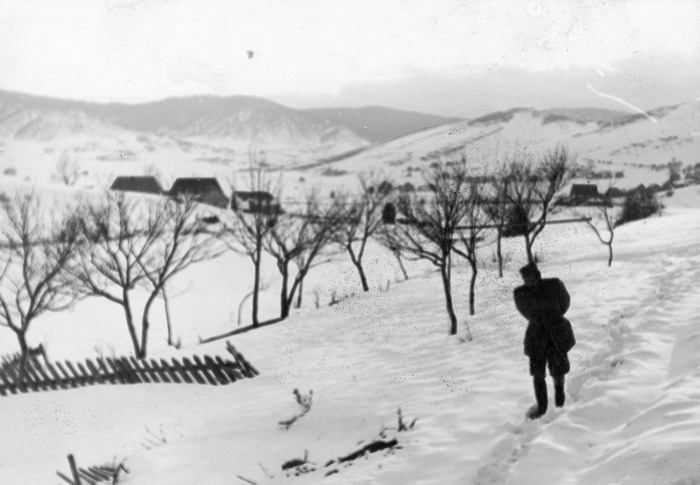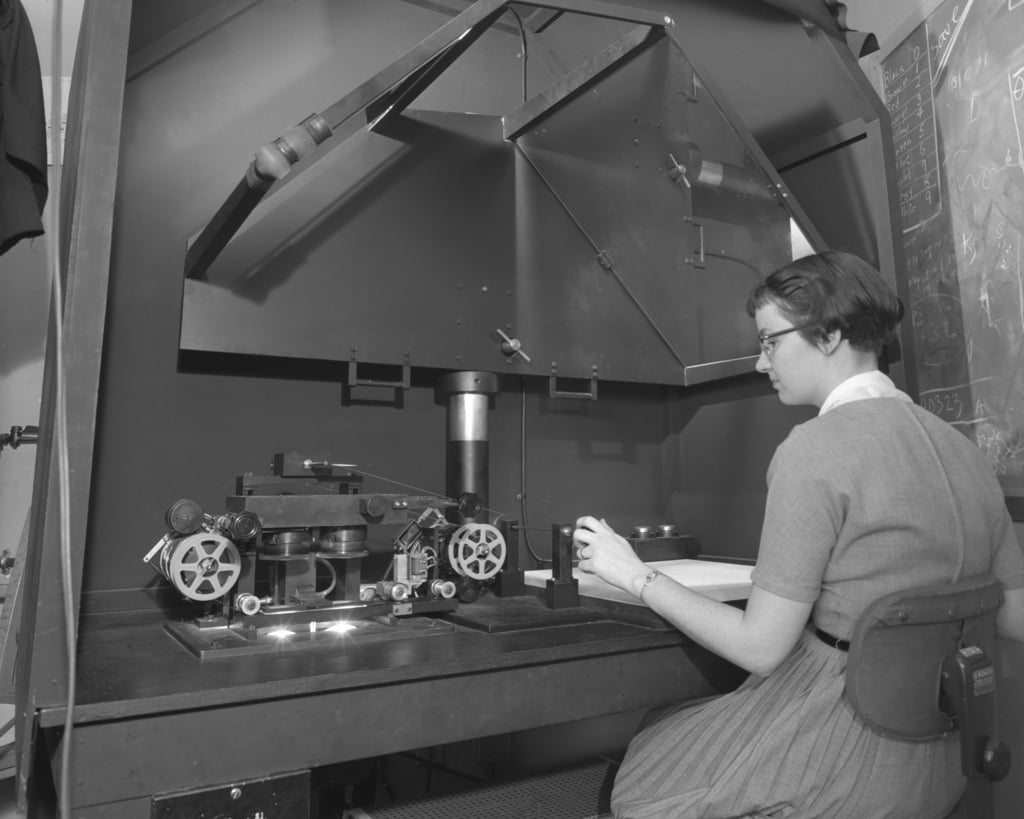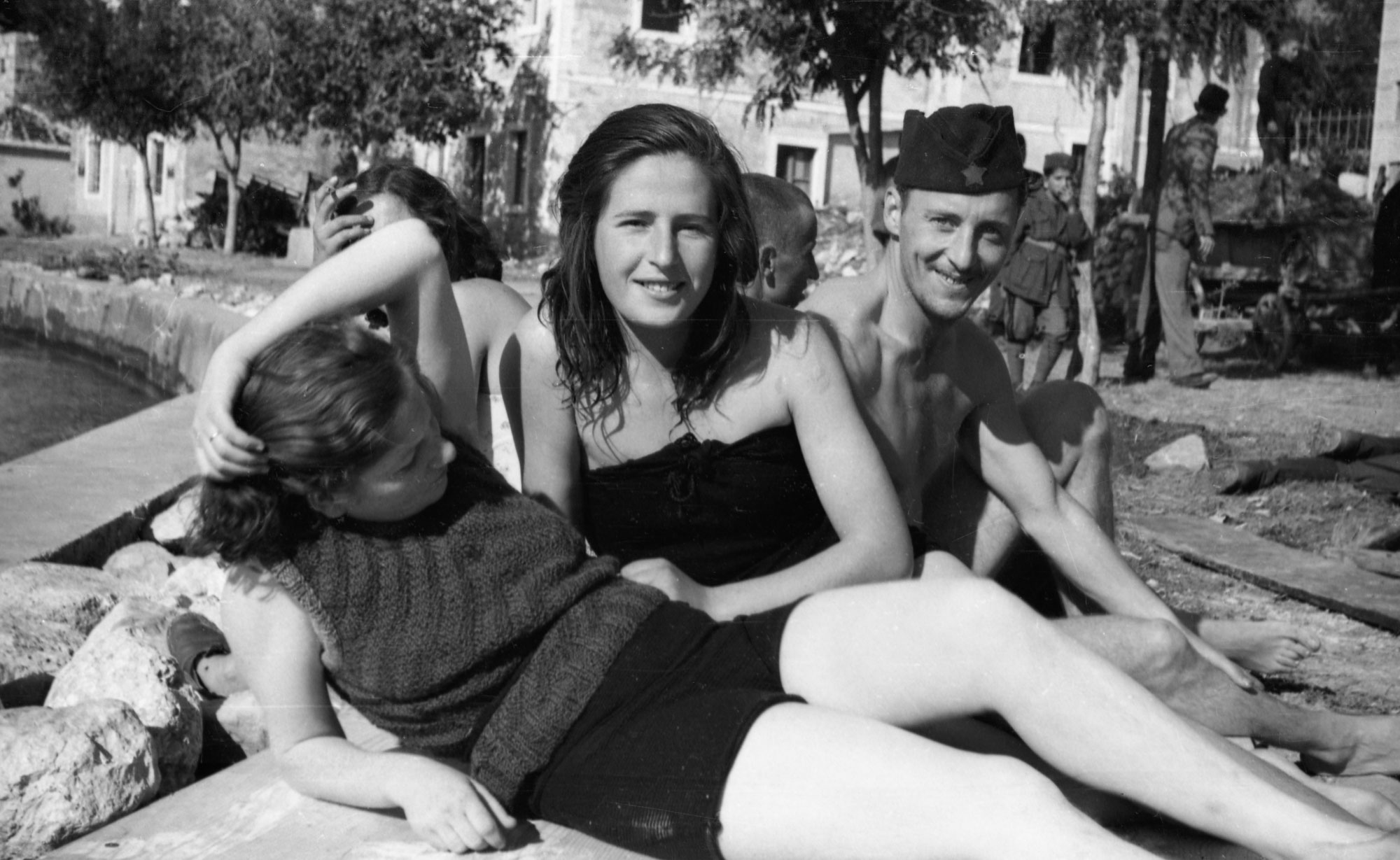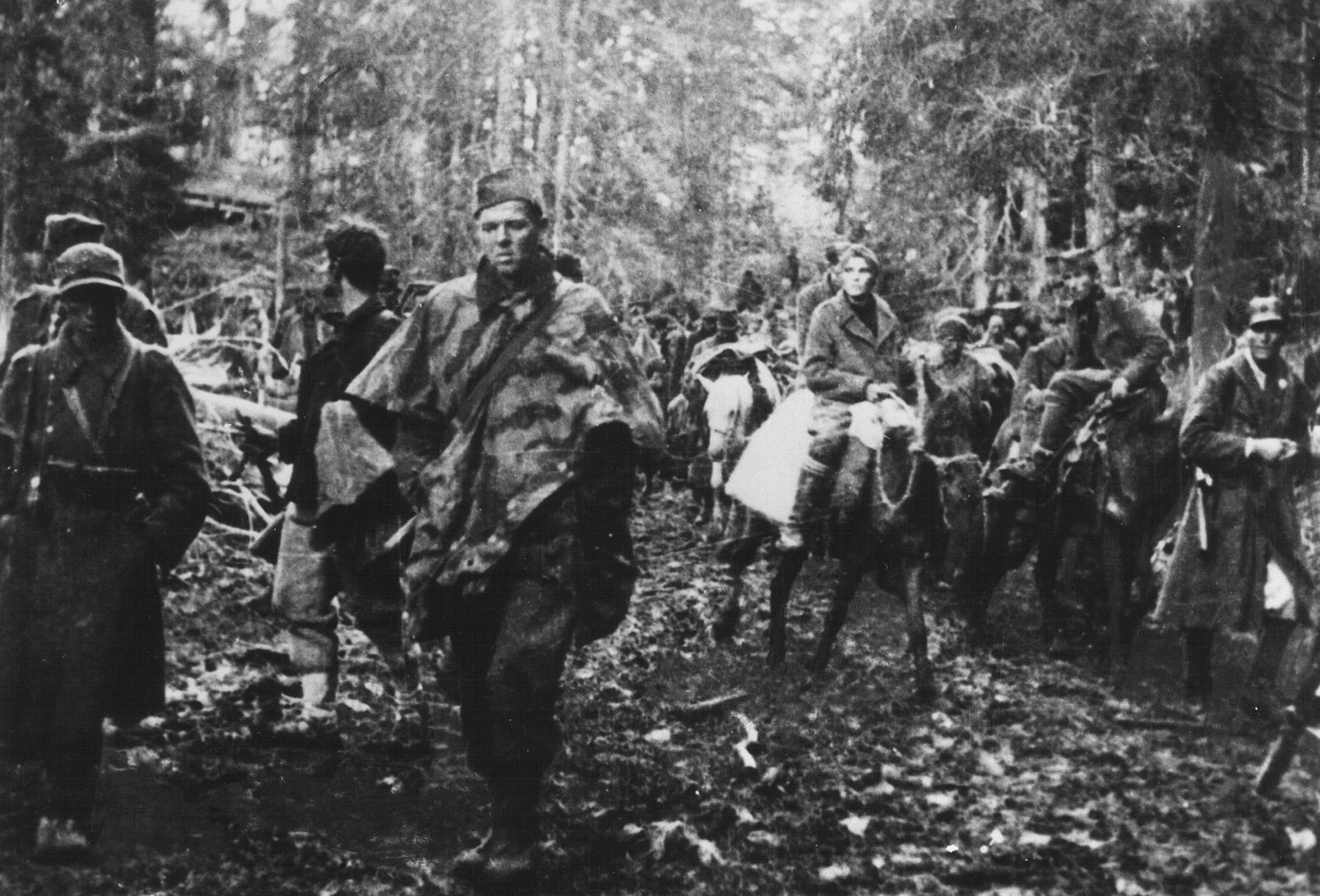
- Teorija
Unwanted Images through the Prism of Counter-archive
Photo-Printing of the Yugoslav People's Liberation Struggle
05/12/2022
Autor: Gal Kirn
Introduction: "In a partisan way"
Immanuel Kant held that philosophy is Kampfplatz, that is, a battlefield of ideas, and as such it is eminently a partisan activity. Philosophers take sides on this battlefield, which is occupied by the dominant ideological worldview/philosophy of the day. At least until Marx, philosophy was perceived as an activity characterised by the courage to think and interpret the world, and by extension, as an activity of competing interpretations of that world. It was with Marx's famous 11th thesis on Feuerbach (Marx 1845) that the central shifting point urged that philosophical practise itself change, the point is namely to change the world, not just interpreting it. Neither Kant nor Marx were wrong, because critical partisan activity will always have to address and think about (social) change, so the challenge of any materialist approach will be in the manner how to grasp and act on that change, both in terms of theoretical analysis and (political and artistic) practice. Rather than measuring the gap between theory and practise, and understanding philosophy as an ever-delayed activity, much less has been said about how ideas themselves are enacted, how and what they do for each other and for the world, and also about how their images can overshadow or even silence other (counter)images, by placing other competing images outside the frame If philosophical activity seems like a site of eternally struggling ideas that always come too late, then partisan political activity has always been portrayed as an avant-garde activity that always comes before time and challenges the existing order of established (colonial) empires, states, and occupations.
Turning more concretely to Davor Konjikušić's project of unwanted images, we must focus on partisan photographic activity. If partisan photography not only captures, represents, and thus helps to interpret the world, how and in what ways can it contribute to changing it? What should we "un-learn" in our reading of the past, and especially the ways how national archives categorise the past - Ariella Aisha Azoulay's (2019) big questions - are here of central importance. Rather than instituting images for the eternity and immortality of humanity, partisan photography, succeeds in the moment it captures "contingency" (Doane 2002), for our purposes most important to highlight is a contingent character of People's Liberation Struggle. Liberation appears in retrospect as necessary-people had to rise up because of fascism, but in many places and at many times they did not, or even collaborated with occupationist forces. So partisan liberation is not part of a teleological-historical necessity. I would like to argue that also with the help of partisan photography, because partisan "photo-eye" captures the fleeting moment of the partisan present, its "deteritorialising" and ever-changing territory, the way how partisan men and women organised their struggle, their way of life, their symbolic networks of resistance, and not only their military actions/fights.
Such a future-oriented partisan photo archive openly opposes any idea of reconciliation of partisan past and nationalist present. In the post-Yugoslav context, from nationalist to liberal discourses, we can recognise the trope that all wars are bad, that all sides are equal, and thus the victims are equal. Partisan photo archive opposes such reconciliation of memory, which in reality serves to appease contradictions and forget the historical context. Worse than reconciliation, a number of right-wing memorialisation projects highlight partisan crimes while relativizing fascist crimes and openly rehabilitating fascism-which was the hegemonic politico-military force in both World War II and the 1990s (for details on the context and degree of revisionism see Buden 2020). On the other side of the spectrum, one finds a Yugonostalgic view that romanticises everything associated with the socialist, partisan, and Yugoslav past and its emblematic leader Josip Broz Tito.
While the revisionist frame demonises the partisan and socialist past, nostalgia freezes the past in a romantic image. The project of the unwanted images intervenes in such a constellation of memory politics that erases the past and, through the absence of a solid archival policy, also neglects the material of the past. In this respect, the unwanted images take on an institutional role, while the counter-archival goal is deeper, namely to disrupt the existing frame of preserving the scattered material.
The partisan photo-counter-archive does not shy away from the starting point of the "dissonant heritage," that is, that the field of memory culture is riddled with antagonisms. Each engaged photographic camera, its perception and its (counter) public, what Ranciere would call the "emancipated spectator" represents the role of the counter-archivist beyond the reconciler or therapist who heals the wounds of the national past. The counter-archivist uncovers key antagonisms and helps train the eye and the ear (Buck-Morss 2012) in emergent mode of perpection. This photo archive of unwanted images also includes images of violence, dead bodies and animals, shots of military action, all of which can be placed within a more conventional genre of war photography documenting the horrors of World War II in Yugoslavia. However, for my purposes of photo-counter-archiving, the images of liberation themselves are most important, those photographic eyes that managed to capture liberation processes that moved men, women and animals on a very different map of our society, promoting and realising an alternative worldview. These works of partisan photographic art captured on celluloid become what Deleuze and Guattari have called the "monument of revolution," that:
“does not commemorate or celebrate something that happened but confides to the ear of the future the persistent sensations that embody the event: the constantly renewed suffering of men and women, their recreated protestations, their constantly resumed struggle … The victory of a revolution is immanent and consists in the new bonds it installs between people, even if these bonds last no longer than the revolution’s fused material and quickly give way to division and betrayal.” (Deleuze and Guattari 1994: 176).
Monuments to national glory, to great leaders, but also to horrors and sacrifices of specific community, characterize the monumental landscapes of the twentieth century. Also, much more effort has been so far invested in studying and organising national archives, histories, that rests on the cartography of ruling powers and horrors. In memory studies, there is recentlty a growing interest in better understanding the intertwining of exploitation and domination (Rothberg 2009), while much less work has been done on cartographies/archives of resistance (Rigney 2018). There has been a strong decolonial push in the world of art and critical research, pointing to the vast territories unknown both in terms of violence over the oppressed and their emancipation. With respect to the Yugoslav partisan archives, there have been some small sporadic attempts to make photographs or other artifacts available to a wider public, such as the archives of the Museum of Yugoslavia, the Museum of Modern Art in Ljubljana, or the most advanced work, to my knowledge, at the Museum of Contemporary History of Slovenia (Ljubljana). However, less work and thought has been given to the question of how we can continue to use this material, how we can appropriate the scattered artifacts and make them available in our social life. This website, which is one of the results of Davor Konjikušić's (and his team's) continuous long-term work, presents us with a unique critical repository of scattered photographic material that can be reconstructed and reassembled, remontaged/re-edited in a variety of ways to equip us with an alternative memory and future of the oppressed.
It is obvious that the partisan struggle and Yugoslavia are not the easiest subjects to build an archive around, since right-wing historical revisionism and, to a lesser extent, Yugonostalgia are so strongly ideological. However, in the last 10-15 years, some critical researchers, artists, and political activists have begun to pave the way for an alternative approach to the past, even thinking about how to mobilize the revolutionary resources of the partisan past. What is the significance of traces of federation, internationalism, socialism, women's struggles, anti-fascism in our present authoritarian-patriarchal-neoliberal constellation? Moreover, I believe that the scattered fragments of partisan struggle speak of the nature of partisan struggle itself and perhaps should be formally inscribed in any counter-archive, counter-atlas: Both the partisan struggle and the archives are de-territorialized and as such "incapable" of simple state centralization.
It would not do the material justice to simply attribute it to the liberal state and its national archive. Counter-archive's goal is to fight precisely against the current state of affairs, and as such it is interested in revolutionary excess, in what I have called counter-archival surplus that might also be difficult to map and inscribe in our counter-atlas. In other words, Counter-archive keeps this surplus dimension open and does not reduce it to the politics of the (former or current) state, nor to the aesthetic ideology of authenticity and creativity. The counter-archive's main task is to learn with and mobilise the emancipatory resources and victories of the oppressed that have the potential to spill over. It aims to nurture and organise these voices, gestures, and images for an emancipated future. It attacks the cover-up and mystification in the dominant discourse and archive by interrupting it, by inserting gaps and slivers of resistance. Re/de/constructions are part of the counter-archival practice
Concrete case studies: figures of liberation and photo-printing of the liberation struggle
In the following, I would like to give some brief analysis of some photos that caught my eye while I was browsing the online archive and thinking about which figure, which image, which photos remained with us long after the end of World War II. One could easily argue that two photos, immortal figures, stand out from the central partisan photo archive: partisan leader Tito and Stjepan Filipović. The latter was a communist and partisan who was captured and tortured by the Nazis. His perseverance and the cry of "Death to fascism, freedom to the people" that he uttered moments before his public execution, extending his both fists and advocating a universalist idea, made him a national hero, while the cry itself has remained the central slogan of the entire liberation struggle. Recently, more attention has been paid to a female partisan figure. Also in this archive we find a series of remarkable photos of partisan women-fighters, one of the most "heroic" is the photo of partisan fighter Lepa Svetozara Radić, a seventeen-year-old partisan fighter who was in charge of the wounded during the Fourth Offensive against the partisan forces in central Bosnia. She was part of a group of wounded and fought to the last hail of bullets, besieged by the Prince Eugen division. Under severe torture, she refused to reveal the names of the partisan leadership and was publicly executed .
There were far fewer people present at her execution than in Filipović's case.According to eyewitnesses, she shouted out, "Long live the Communist Party and the partisans! Fight, people, for your freedom ... " Furthermore, Dušanka Kovačević recounts Lepa Radić's last moments in her book: when the Nazis put the noose around her neck, she was offered a way out by revealing the identity of her comrades. She replied, "I am not a traitor to my people. Those you ask about will reveal themselves when they have succeeded in killing all you evildoers to the last man... " The last sentence, the curse that will be realised towards the end of the war, was interrupted, and a deep silence and stillness followed, while her eyes remained frozen and fixed on a point below her, waiting and facing death. The photo shows a strong, calm resilience. This resilience, which was stronger than life, a surplus, reflected the deep resistance that pervaded the partisan struggle
However, what really struck me in reviewing the images capturing partisan social life in the liberated territories was the complexity of the infrastructure of partisan printmaking/cultural activities that were central to cultural revolution and the imagination of the symbolic map/network of resistance.
From the assembling of valuable material and printing presses, their transportation and protection to their production and distribution; from the printing of posters, poetry collections and political pamphlets to the exhibition of partisan photographs, the registration of reading groups and cultural campaigns.
All these photos make a historian's long-term study much more comprehensive: for example, Branko Petranović's study of partisan printing during the war concludes that there were more than "3,500 partisan newspapers," as well as "151 collections of poetry, 111 books and brochures/booklets of art prose, and 102 collections of reports" (Petranović 1988, 371). As for poetic production in Yugoslavia, Vladimir Dedijer, a member of Tito's inner circle, collected various political and cultural documents during the struggle. Dedijer also conducted extensive research in various archives in the decades after the war and claimed that more than 40,000 poems and songs were produced by the partisans during the World War ( II ) (Dedijer 1980, 929), while about 12,000 poems and songs were collected in Slovenia alone (Paternu 1987).
In the early stages of the war, the illegal networks in the big cities were of great importance, but by mid-1942 at the latest, the cultural infrastructure and the majority of partisan activists moved from the cities to the countryside. This had to do with the expansion of the liberated territories and the establishment of a political and cultural infrastructure - printing presses, cultural houses and open-air theatres, etc.
The rural area with a largely illiterate population has long been (and still is) associated with a metaphor of backwardness and conservative values organised by the (local) church. As such, the peasantry was always seen as a conservative force, even by many on the communist left. However, during the partisan liberation struggle, the peasantry and the countryside in general became an increasingly politicised space that was transformed along with the main social base of the partisan struggle. It was here that most of the partisan struggles and the organisation of political and cultural life by the people took place. In many reading seminars, illiterate people were not only taught to read, but also to write their notes and poems.
As Miklavž Komelj (2008, 58-59) rightly notes, the Yugoslav countryside was more progressive than the urban centres until the end of the war. People's imagination grew, and with it the partisan artists and technicians' eagerness to experiment, reinventing ways of printing, acquiring elementary material in the most impossible circumstances by scraping floors in houses and workshops (as linoleum and wood were often used).
Finally, as part of my future research on partisan ecology, I would like to point out a few examples that indicate a special comradely relationship between partisans and forest/nature and animals. Many partisans referred to their animals as "comrades" in their notes, short stories, or even drawings (cf. Ive Šubic)
The partisans developed a special sensitivity towards the forest and animals and used them in their struggle. There are poems, short stories, drawings, graphics that depict animals not in a certain empathy of man towards the animal, but rather that animals have become our comrades in the fight against fascism
Animals and nature are very present in partisan art, pillars in the snow, logistics with little motorization, mules, horses and oxen/cows, some also as food. Nature became part of the battlefield: on one side the fascist war that dominates people and nature, war as destruction, while the partisans appropriate nature as a campsite to house their wounded in hidden hospitals, nature becomes a place of resistance, also of mass campaigns, political and cultural
The boundaries between partisan culture and nature, between partisan art, politics and military struggle have become permeable, but all are overdetermined by the partisan perspective.
Literature
Azoulay, Ariella Aisha. 2019. Potential History. Unlearning Imperialism. London: Verso.
Buck-Morss, Susan, and Jacir, Emily. The Gift of the Past. In: dOCUMENTA (13) Catalog 1/3: The Book of Books. Carolyn Christov-Bakargiev, and Bettina Funcke, editors. Ostfildern, Hantje Cantz, 2012.
Buden Buden (2020). Transition to Nowhere. Berlin: Archive Books.
Brenk, France. “O filmski in fotografski kulturi med narodnoosvobodilnim bojem.” [On Film and Photographic Culture During the People’s Liberation Struggle]. Kultura, revolucija in današnji čas, Franček Bohanc, editor. Ljubljana, Cankarjeva založba, 1979, pp. 61–67.
Dedijer, Vladimir. Novi prilozi za biografiju Josipa Broza Tita. [New Notes on the Biography of Josip Broz Tito] Zagreb, Mladost Zagreb, 1980.
Deleuze, Gilles, and Félix Guattari. What is Philosophy? New York, Columbia University Press, 1994.
Doane, Mary Ann 2002. The Emergence of Cinematic Time: Modernity, Contingency, the Archive. Harvard University Press.
Dugandžić, Andreja, and Tijana Okić. Between Myth and Forgetting. Belgrade, RLS, 2016.
Kirn, Gal (2020). The Partisan Counter-Archive, Berlin: De Gruyter.
Komelj, Miklavž. Kako misliti partizansko umetnost? Ljubljana, založba cf./*, 2008.
Konjikušić, Davor. Red Light - Yugoslav Partisan Photography and Social Movement 1941–1945. Belgrade, Rosa Luxembourg Foundation, 2019.
Kovačević, Dušanka. Women of Yugoslavia in the National Liberation War. Belgrade, Conference for Social Activities of Yugoslav Women, 1977.
Marx, Karl. Theses on Feuerbach. 1845. Marx-Engels Archive. www.marxists.org/archive/marx/works/1845/theses/index.htm. Accessed 12 November 2022.
Paternu, Boris et al., editors. Slovensko pesništvo upora 1941–1945. Prva knjiga. Ljubljana, Mladinska knjiga and Partizanska knjiga, 1987.
Petranović, Branko. Istorija Jugoslavije II: Narodnooslobodilacki Rat i Revolucija. [History of Yugoslavia II: The People’s Liberation War and Revolution] Belgrade, Nolit, 1988.
Popivoda, Marta (2021, Serbia / France / Germany). Landscapes of Resistance.
Rigney Ann (2018). Remembering hope: transnational activism beyond the traumatic. Memory Studies 11(3): 368–380.
Rothberg Michael (2009). Multidirectional Memory. Stanford, CA: Stanford University Press.



